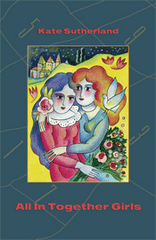
I have long been familiar with the work of Scottish writer Edwin Muir, particularly with his poetry and his extraordinary travelogue Scottish Journey. I also knew a little about his wife Willa Muir, through his work and through her occasional brief appearances in biographies of other Scottish writers, for example, George McKay Brown. I was aware that she was an accomplished translator and had, together with Edwin, translated many literary works, most notably the novels and stories of Kafka. But until I followed up a mention on Sandra Alland's blog of a new study of her writing (Moving in Circles: Willa Muir's Writings by Aileen Christianson), it had somehow escaped my notice that Willa Muir had also written a couple of novels and several works of non-fiction. I assure you that it's not like me to leave an accomplished woman writer to languish in the shadow of her more famous husband, but I confess that with Willa Muir this is exactly what I had done. No longer!
I plan to order a copy of Christianson's book and, while I await its arrival, I'm going to read as much of Willa Muir's work as I can get my hands on. Yesterday, I arrived home from the library with two of her books: a novel titled Imagined Corners and a memoir about her husband titled Belonging. I've done no more than flip through them so far, but I thought I’d share with you the back cover description of the novel and the first paragraph of the memoir, to see if I can persuade some fellow bloggers to join me in my quest to discover Willa Muir.
Here's the back cover copy from Imagined Corners, a novel first published in 1935:
Willa Muir was an acute and acerbic observer with an intimate knowledge of the Scottish middle-class conventions that she describes. In Imagined Corners, her first novel, young Elizabeth Shand, newly married to the unstable but handsome Hector, finds herself in the social, intellectual, and spiritual strait-jacket of small-town life early this century. Into the growing complexity of these entangled relationships her sister-in-law and namesake returns from Italy, sophisticated and freshly widowed. Through her, Elizabeth rediscovers an intuitive desire to face life honestly and intelligently, and reassesses an enforced life of petty vanities and delusion against new possibilities of personal and sexual freedom.
And here's the first paragraph of Belonging, a memoir first published in 1968:
I first met Edwin Muir in a Glasgow flat sometime during September 1918. On the face of things our meeting was unlikely; he was a costing-clerk in a Renfrew shipbuilding firm and I was a lecturer in a London training college for teachers. It was still more unlikely that having met we should get married less than a year later and most unlikely of all that our marriage should last. Edwin's Glasgow friends, who thought they knew him, prophesied that it would not last six months; my friends in London, who thought they knew me, were of the same opinion. Yet when he died in 1959 I became aware that I had been assuming we should die together, when it came to dying, hand in hand. I could not believe it possible for me to be alive and for him to be dead. It did not make sense. We belonged together.
I promise to report in as I read my way through first these books and, later, Christianson's Moving in Circles.

2 comments:
I didn't know anything about Willa Muir but I shall certainly be tracking down some of her writing. Imagined Corners sounds very interesting - thank you for posting about it.
I'm captured by the first paragraph of Belonging. What a beautiful sentiment.
Post a Comment